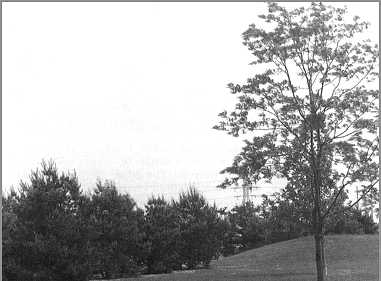The standard GP engine was a 350-horse 400 4-barrel, with 10.5:1 compression. The regular-fuel 400/automatic combo was a no-cost option. The 428 was available in two versions, a 360-hp 4-barrel and the "Quadra-Power" 428, which put out a thumping 376 hp.
Other technical advances for '67 included a dual master cylinder, optional disc brakes, collapsible steering column and side marker lights. This was also the first and last year for a production convertible Grand Prix. Previously, Pontiac had built the X-400 show cars and also a very small but unknown number of "brass hat" GP convertibles. These, of course, cannot be considered production cars. All told, Pontiac produced only 5,856 GP ragtops, making them quite a collector piece today, especially if ordered with the 428 HO powerplant.
Sales for the '67 Grand Prix increased 6,224 units over '66, for a total of 42,981 cars. As mentioned, there were 5,856 convertibles, which makes the increase in coupe production a mere 368 units. When one takes into account that the Bonneville Brougham convertible was dropped for 1967, perhaps the GP's sales increase is even less significant.
The only specialty 1967 GP show car was a convertible. Dubbed the St. Moritz, it was a "paint and upholstery" show car—meaning no modifications were made to the body or drivetrain. It sported a snow skiing motif, which was set off with custom pearlescent Ice Blue paint. The interior was finished in Swiss ski sweater cloth and matching ice blue leather.



Due to the continuing erosion of sales, 1968 would prove to be the last year for a B-bodied
Grand Prix, with production totaling only 31,711 units. The convertible version did not return that year because of the '68's redesigned rear. Since it
was no longer shared with the Catalina, not enough demand was expected to cover retooling costs.
|  |
1968
1968 proved to be the Grand Prix's slowest-selling year, as only 31,711 were built. Granted, that is still a bunch of cars, but it was roughly half of 1963's total. The GP's market penetration had dwindled severely.
The convertible had been dropped for '68, replaced by the Bonneville Brougham ragtop, which had returned that year. It was painfully evident that the concept of a B-body GP, a full-size luxury performer, was losing favor with the public. As attractive as the car was, the market focus was more on the flashy intermediates than on cars the size of the GP.
Styling-wise, the car had more rounded features than previous incarnations. The rear side window had lost its sharp trailing edge. While the car looked cleaner with a painted roof, the available "halo-style" Cordova vinyl top treatment looked a bit awkward—sort of like a toupee that was too small for the wearer's head. It tended to exaggerate the lower half's size even more than before.
When it came to the powertrain, however, the car was never better. While the standard 400 stayed at 350 hp and the low-compression version maintained its 265 horses, both 428s had picked up some power. The standard 428 was now up to 375 hp, just one horse shy of the previous year's HO. The big cheese for 1968, the 428 HO, had picked up a full 14 horses, upping the ante to a very robust 390 hp.
Even if the GP was heavy, it was still a very capable beast. Unfortunately, the 1968 Grand Prix marked the end of the B-body GP.
NEXT >
|
PONTIAC
|